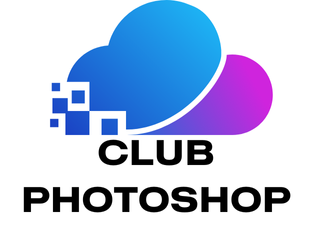Starting a startup is thrilling yet challenging. A top-notch digital product design studio can be your secret weapon on this journey. They transform ideas into engaging user experiences, driving growth and innovation. This collaboration yields impactful designs that not only resonate with users but also streamline operations. Discover how the right design partner elevates your startup, turning challenges into opportunities for success. Let’s explore the transformative power of effective product design.
Enhancing Your Startup Journey with a Top Digital Product Design Studio
For startups navigating the competitive landscape, harnessing the power of digital product design is paramount for scaling success. A robust digital product design strategy doesn’t just enhance aesthetic appeal but drives user engagement and loyalty, positioning a startup for sustained growth. Understanding the significant role of digital product design is crucial for startups looking to gain a competitive edge.
Topic to read : Essential Strategies for Safeguarding Your Single Sign-On (SSO) Implementation with SAML
The Strategic Importance of a Design Studio
Hiring a leading design studio provides startups with access to a wealth of expertise, vital for empowering your startup journey. These studios bring together interdisciplinary teams that specialize in user experience design, agile methodologies, and cutting-edge design tools. Their collaborative approach not only streamlines the product development process but also aligns design with business goals, ensuring a cohesive strategy that is crucial for market success.
Challenges Faced Without Effective Design Strategies
Startups often grapple with unique challenges, especially when they lack effective design strategies. Common issues such as poor user interface, inadequate usability testing, and misaligned product-market fit can hinder growth. By leveraging the skills of a digital product design studio, startups can tap into methodologies like design thinking and agile product development, which are essential for creating innovative solutions and overcoming these hurdles.
Have you seen this : Mastering Disaster Recovery: Proven Strategies for Safeguarding Your MongoDB Database
Methodologies and Tools for Success
Design studios utilize a plethora of methodologies and tools to create meaningful and user-centered products. From prototyping techniques to market research and design validation, these approaches ensure that product development is data-driven and user-focused. Design methodologies like atomic design and frameworks such as Jobs To Be Done allow studios to craft solutions that truly meet user needs, while tools like Figma enhance remote collaboration and effective design collaboration.
Partnering with a digital product studio such as <https://realistack.com/> not only provides startups with a competitive edge but also aligns product creation with strategic business goals. Their expertise in combining innovative design solutions with practical usability ensures startups are equipped to meet the demands of their target market.
The Role of Digital Product Design in Startup Success
In today’s digital age, startups must prioritize exceptional user experiences to stand out. Digital product design plays a pivotal role in crafting intuitive and engaging products that resonate with consumers and drive business growth. By focusing on user-centered design principles, startups can differentiate themselves in a crowded marketplace and achieve long-term success.
Significance of UX/UI in Increasing Revenue
A well-executed user experience (UX) and user interface (UI) design can dramatically impact a startup’s bottom line. The Stanford Question Answering Dataset (SQuAD) equation highlights the value of precision and recall in achieving precise user solutions: precision involves crafting features users love, while recall focuses on addressing those features effectively. For startups, this means that a fine-tuned UX/UI approach directly translates into enhanced revenue streams by ensuring that products resonate with users’ needs. Modern tools like Figma not only streamline the design process but also ensure user-centric products by facilitating collaboration and prototyping.
Case Studies of Notable Startups
Insticator and Bluwalk are prime examples of startups leveraging design prowess to fuel growth. Insticator, an ad tech giant, embraced robust UX enhancements, contributing to its rapid rise recognized by the Inc. 5000 list as a fast-growing company. Similarly, Bluwalk achieved a twofold increment in conversion rates after redesigning its app. Such successes emphasize the importance of aligning UX/UI design with user needs and business objectives. For many startups, observing these models clarifies the essential relationship between design iteration and revenue boosts.
How Design Enhances Brand Identity and User Engagement
Design not only affects usability but also profoundly influences brand identity and user engagement. By establishing a coherent visual identity and memorable brand storytelling through design, startups can cultivate deeper user connections. This symbiosis of design and branding significantly boosts customer loyalty, as seen with industry leaders like Spotify and Netflix, where aesthetically pleasing and intuitive interfaces foster sustained user interest. Startups can build strong brands by integrating strategic design elements that resonate culturally and emotionally with their target demographic, leading to long-term engagement and loyalty.
Through effective design thinking methodologies and agile product development, startups can rapidly adapt to market shifts, optimizing products for enhanced user satisfaction and long-term success. By nurturing a keen understanding of user needs and championing design as a competitive advantage, startups pave the way for remarkable performance in a dynamic digital marketplace.
Effective Collaboration with a Digital Product Design Studio
A successful digital product is the result of seamless collaboration between clients and design studios. This article delves into the essential factors that contribute to effective partnerships, from defining clear objectives to maintaining open communication.
Building a Product Development Process that Works
To forge a successful product development process, it’s crucial to establish a clear framework that aligns with both business goals and user needs. This process typically begins with setting a strong foundation of user-centered design principles, ensuring that every design choice enhances the overall user experience. Product design studios often employ design thinking methodologies to navigate user challenges. These methodologies involve empathizing with users, defining pain points, ideating solutions, prototyping, and conducting thorough testing. By focusing on iterative cycles, feedback is continuously incorporated, refining the product at every step.
The Benefits of Agile and Iterative Design Approaches
Agile product development offers a flexible framework that supports adaptability in design projects. Unlike traditional linear methods, agile methodology embraces change, allowing teams to respond swiftly to insights gained throughout development. This approach encourages frequent updates and revisions, ultimately reducing the risk of large-scale failures and ensuring the product remains aligned with user expectations. Iterative design, paired with agile practices, enables project teams to experiment early and often. Rapid prototyping serves as a valuable tool in this setting, where small, testable versions of the product are continuously refined based on user feedback, leading to a more polished final product.
Utilizing Tools for Seamless Communication and Prototyping
Effective design collaboration hinges on the ability to communicate seamlessly and visualize ideas in real-time. Modern digital design tools, like Figma and Miro, have become indispensable for design teams working remotely. These platforms offer intuitive interfaces for sketching, sharing, and reviewing design assets collectively, which significantly enhances the collaboration between designers, developers, and other stakeholders. Features such as version control and comment threads facilitate clear communication, preventing misunderstandings and misalignments. Utilizing these tools correctly ensures that teams remain synchronized, even when geographically dispersed, thus streamlining the design process and ensuring that project timelines and objectives are consistently met.
Selecting the Right Digital Product Design Studio
Choosing the right digital product design studio is a crucial decision for any business. The studio you select will significantly impact the success of your product. This guide will help you navigate the selection process and find the perfect partner for your project.
Key Factors to Consider When Choosing a Studio
In the dynamic landscape of digital product design, selecting the right studio can significantly influence your project’s success. Key factors to consider include the studio’s expertise, experience, and alignment with your brand’s values. Look for studios that specialize in your industry, as they will have a deep understanding of industry-specific challenges and user needs. Additionally, inquire about their design methodologies to ensure they use current best practices, such as user-centered design and iterative processes that prioritize feedback and adaptability.
The studio’s portfolio can serve as a reliable indicator of their capability and style. Evaluate their past projects to see if their design aesthetics and approaches to problem-solving resonate with your vision. Client reviews and case studies can provide insights into their ability to meet deadlines and deliver quality work within budget constraints. Finally, consider their communication and collaboration styles. A studio that values open dialogue and seamless integration with your team will likely foster a more productive partnership.
Assessing Expertise and Past Projects
When assessing a studio’s expertise, it’s essential to delve into their past projects. This involves not just looking at the final product but understanding the journey taken to get there. Ask for case studies that detail the design process, challenges encountered, and solutions implemented. Attention should be paid to their experience with digital product design tools like Figma or Miro, as these tools support efficient and collaborative design workflows. Their proficiency in using these tools is often indicative of their ability to innovate and adapt to new technologies.
Real examples of their work, especially those that include user-centered design elements, can be enlightening. Studios that have worked on successful digital products, similar to those by industry leaders like Spotify and Netflix, often understand how to create strong brand identities that resonate with users. This expertise in crafting relatable and effective designs is beneficial for new startups aiming to establish themselves in the market.
Understanding Costs vs. Long-term Benefits of Professional Design Services
While the initial cost of hiring a digital product design studio can be substantial, it is vital to weigh these expenses against the potential long-term benefits. Professional design services often lead to the creation of intuitive products that enhance user experience and contribute to customer loyalty and brand trust. Businesses with robust design capabilities are documented to achieve significantly higher revenues and better returns to shareholders.
A comprehensive digital product design studio can offer more than just product aesthetics; it can provide strategic insights that align design with business goals. This approach can drive growth and scalability, reducing the risk of product failure. Startups, in particular, can benefit from these expert services by avoiding common pitfalls and better navigating their market.
Opting for cost-effective design solutions doesn’t mean compromising quality. Professionals in the field leverage their skills to ensure that design expenses translate into tangible business value. Ultimately, investing in a competent design studio can be a pivotal decision that provides a competitive edge in the crowded digital landscape, making it an investment rather than a cost.











